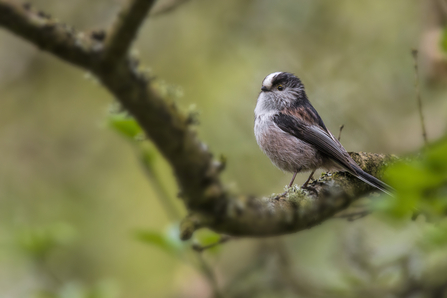
Long-tailed tit by Roy McDonald
English oak leaves in autumn by Ross Hoddinott/2020VISION

Long-tailed tit by Roy McDonald
This quarry and nearby railway cutting have geological features of national importance - as well as abundant wildlife. The layered bare limestone rock faces give a fascinating insight into the site's Jurassic past (more than 160 million years ago). Medieval earthworks give Ardley Wood Quarry archaeological interest too.
Scrub, woodland and rough grassland make up the diverse array of habitats along with seasonal ponds. Listen out for an array of birds flitting around in the trees, which are full of autumn colour. On mild days you may even see a butterfly or two basking in the late autumn sunshine.
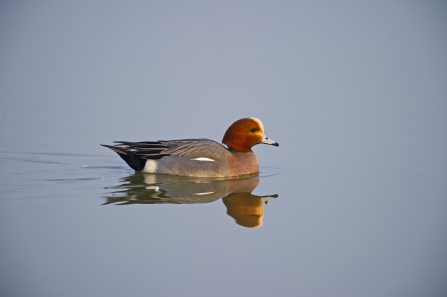
Wigeon by David Tipling/2020VISION
Enjoy watching the comings and goings of migrating waterfowl in this quiet corner of Buckinghamshire. Created in 1956 by damming a small tributary of the River Great Ouse, Foxcote Reservoir has become important for the numbers of wintering waterfowl, especially wigeon, coot and tufted duck. These are often joined by smaller numbers of goldeneye, goosander, teal, shoveler and occasionally pintail, striking visitors from further afield.
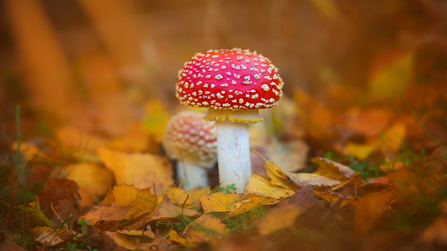
Fly agaric fungus mushroom. Picture: Jon Hawkins/ Surrey Hills Photography
This ancient woodland is famed for spectacular autumn colours and fabulous fungi. Over 200 species have been recorded including boletes, russulas, milkcaps and false death cap. Look out for the bright red beechwood sickener poking out from the fallen beech leaves, the fly agaric – the classic red and white fairytale toadstool, and the blue-grey oyster mushroom, growing in tiers at the base of trees.
Explore the reserve and surrounding countryside with our circular Wild Walk.
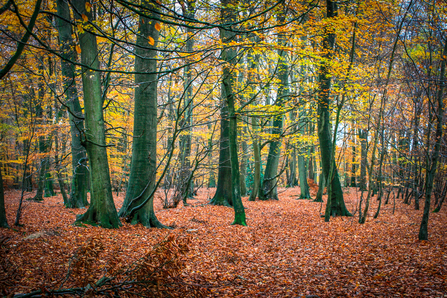
Beech trees in autumn at Hog and Hollowhill Woods. Picture: Cathie Hasler
These woods near Marlow lie within the Chilterns Beechwoods Special Area of Conservation and the Chilterns Area of Outstanding Natural Beauty. They are also part of the Hollowhill and Pullingshill Woods Site of Special Scientific Interest. Beech trees dominate the woods but there are also other species here including oak, ash, field maple, birch, larch and yew.
In autumn the beech leaves turn golden orange and the shady woodland floor supports an amazing array of fungi - more than 150 species have been recorded on this reserve.
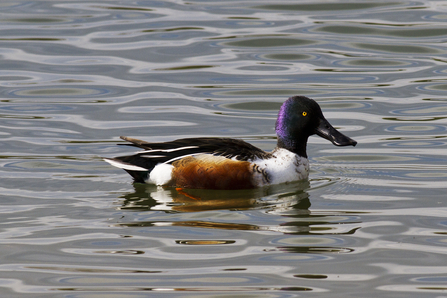
Roy MacDonald
Hosehill Lake is one of several lakes that form the Theale Gravel Pits Complex. These former extraction sites were flooded to form the lakes in the early 1980s and they are all interconnected. Follow the path around the lake to look out for visiting winter birds including shoveler and wigeon.
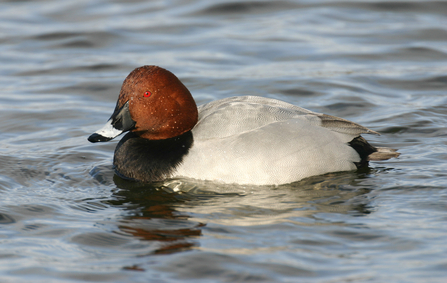
Male pochard by Tom Marshall
Another flooded gravel pit, Loddon Nature Reserve is a great site to look for wintering birds such as gadwall, tufted duck and pochard. Herons and sometimes little egrets hunt for food at the water's edge while songbirds flit around in the trees and scrub.